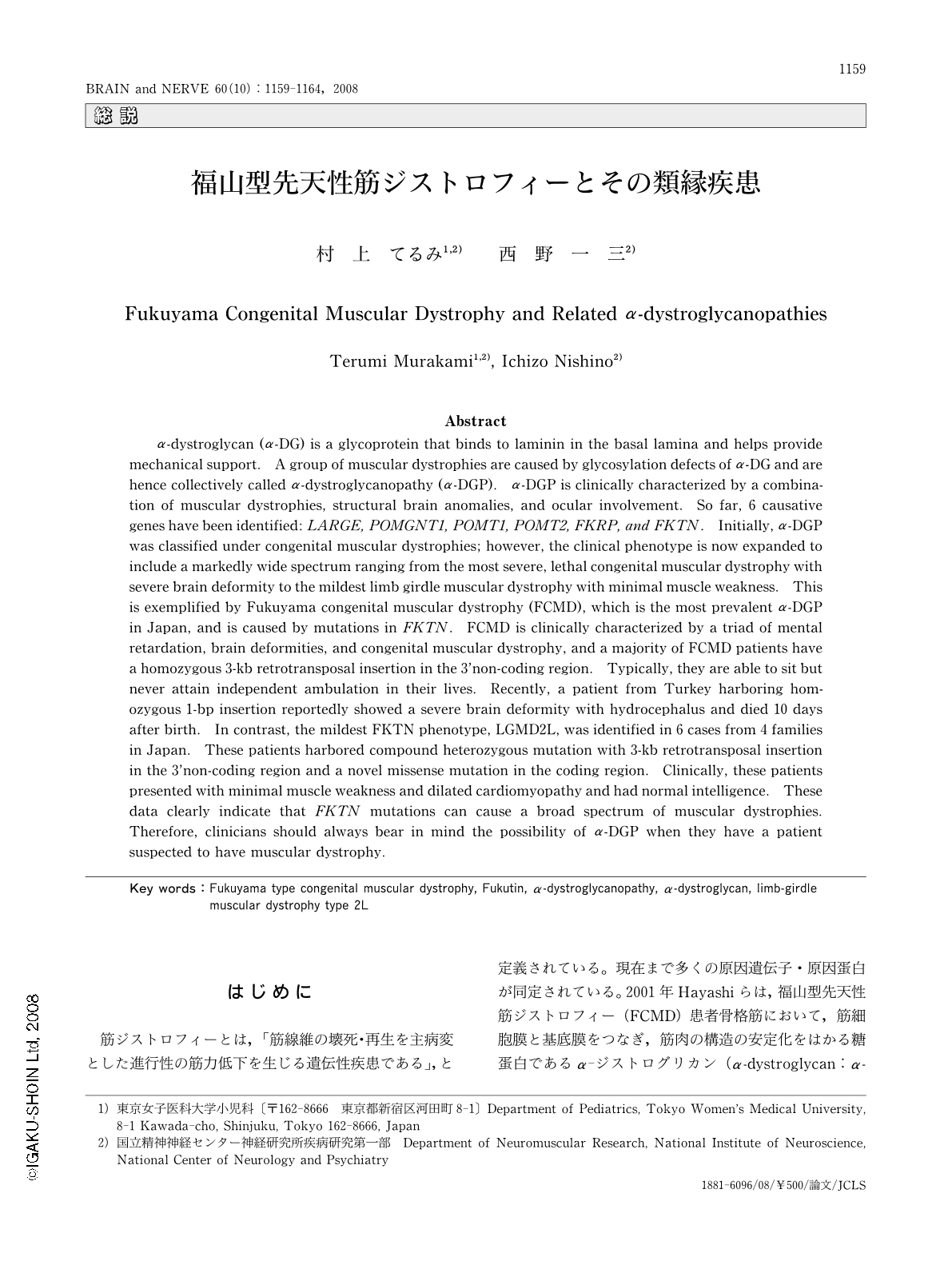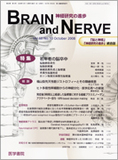Japanese
English
- 有料閲覧
- Abstract 文献概要
- 1ページ目 Look Inside
- 参考文献 Reference
はじめに
筋ジストロフィーとは,「筋線維の壊死・再生を主病変とした進行性の筋力低下を生じる遺伝性疾患である」,と定義されている。現在まで多くの原因遺伝子・原因蛋白が同定されている。2001年Hayashiらは,福山型先天性筋ジストロフィー(FCMD)患者骨格筋において,筋細胞膜と基底膜をつなぎ,筋肉の構造の安定化をはかる糖蛋白であるα-ジストログリカン(α-dystroglycan:α-DG)(Fig.1)の免疫染色性が特異的に低下していることを見出し,FCMDがαDGの糖鎖異常をその病態としていることを初めて報告した。以後,同様の病態が各種の筋ジストロフィーに認められることが明らかとなり,これらの筋ジストロフィーはα-ジストログリカノパチー(α-dystroglycanopathy:α-DGP)と総称されている。これまでに6つのα-DGP原因遺伝子が知られているが,そのうち,本邦ではFukutin遺伝子(FKTN)変異による福山型先天性筋ジストロフィー(FCMD)がそのほとんどを占めている(Fig.2)。本稿においては,特にFKTN変異による疾患を中心にその類縁疾患について述べる。
Abstract
α-dystroglycan (α-DG) is a glycoprotein that binds to laminin in the basal lamina and helps provide mechanical support. A group of muscular dystrophies are caused by glycosylation defects of α-DG and are hence collectively called α-dystroglycanopathy (α-DGP). α-DGP is clinically characterized by a combination of muscular dystrophies,structural brain anomalies,and ocular involvement. So far,6 causative genes have been identified: LARGE,POMGNT1,POMT1,POMT2,FKRP,and FKTN. Initially,α-DGP was classified under congenital muscular dystrophies; however,the clinical phenotype is now expanded to include a markedly wide spectrum ranging from the most severe,lethal congenital muscular dystrophy with severe brain deformity to the mildest limb girdle muscular dystrophy with minimal muscle weakness. This is exemplified by Fukuyama congenital muscular dystrophy (FCMD),which is the most prevalent α-DGP in Japan,and is caused by mutations in FKTN. FCMD is clinically characterized by a triad of mental retardation,brain deformities,and congenital muscular dystrophy,and a majority of FCMD patients have a homozygous 3-kb retrotransposal insertion in the 3'non-coding region. Typically,they are able to sit but never attain independent ambulation in their lives. Recently,a patient from Turkey harboring homozygous 1-bp insertion reportedly showed a severe brain deformity with hydrocephalus and died 10 days after birth. In contrast,the mildest FKTN phenotype,LGMD2L,was identified in 6 cases from 4 families in Japan. These patients harbored compound heterozygous mutation with 3-kb retrotransposal insertion in the 3'non-coding region and a novel missense mutation in the coding region. Clinically,these patients presented with minimal muscle weakness and dilated cardiomyopathy and had normal intelligence. These data clearly indicate that FKTN mutations can cause a broad spectrum of muscular dystrophies. Therefore,clinicians should always bear in mind the possibility of α-DGP when they have a patient suspected to have muscular dystrophy.

Copyright © 2008, Igaku-Shoin Ltd. All rights reserved.


